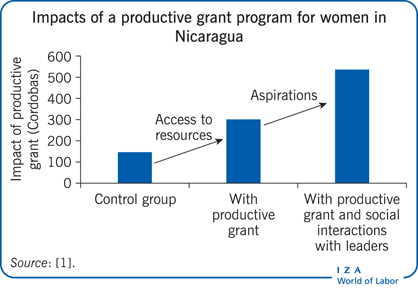Elevator pitch
Productive inclusion programs provide an integrated package of services, such as grants and training, to promote self-employment and wage employment among the poor. They show promising long-term impacts, and are often proposed as a way to graduate the poor out of social assistance. Nevertheless, neither productive inclusion nor social assistance will be able to solve the broader poverty challenge independently. Rather, the future is in integrating productive inclusion into the existing social assistance system, though this poses several design, coordination, and implementation challenges.
Key findings
Pros
Productive inclusion programs have long-term positive impacts on the poor, which span dimensions beyond income.
In rural areas, the net returns of productive inclusion programs are positive, including for the most vulnerable groups such as the extreme poor.
Rural productive inclusion programs that combine grants with training have shown among the most consistent positive impacts.
Integration of productive inclusion into the social assistance system could lead to significant synergies and even larger impacts.
Cons
Productive inclusion programs can help reduce poverty, but will not solve poverty on their own.
There is little evidence on the long-term impacts of large-scale, government-led programs.
Comprehensive packages of productive inclusion services can be relatively costly.
Training programs in urban areas for vulnerable populations such as unskilled youth have shown heterogeneous impacts.
Integrating productive inclusion into the social assistance system poses several design and implementation challenges.
